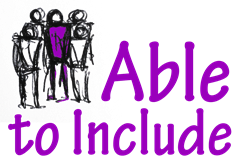Description
The Accessibility Layer is the core development of the Able to Include project, whose main objective is to improve the quality of life of people with intellectual or developmental disabilities (IDD) and similar conditions such as people affected by dementia or any kind of cognitive impairment.
To achieve this, the project has integrated a set of technologies to create a context-aware Accessibility Layer that, by being integrated with existing and future ICT tools, can improve the day-to-day life of people with IDD by understanding their surroundings and helping them to interact with the information society.
The project focused on the most important areas that a person needs to live independently and find fulfilment as an individual: to socialize in the context of the web 2.0, to travel independently and be able to work.
The Able to Include Accessibility Layer Services (in blue) and Apps (in brown) as pilot validated during the project are illustrated in the following diagram:

The Able to Include context-aware Accessibility Layer runs as a Cloud Service at http://al.abletoinclude.eu providing a common API (Applications Programme Interface) by Apps in each user’s device (tablet, smartphone or PC). The Accessibility Layer seamlessly interworks with any Assistive Technology or device options that the user is already using on their device. The service also includes a Software Development Kit (SDK) for developers to incorporate access to the Accessibility Layer and local App into their applications at development time. The open source SDK source code is available and documented on Github.
The Simplext, PictoText and Text2Speech services are provided as simple web services (with light weight JSON RESTful APIs) that take requests (with suitable parameters) and return the appropriate response, as described in deliverable D3.5 (API description). They do not support any threaded dialogues or retain any user data (to simplify the APIs and avoid Data Protection, Privacy and Ethical issues).
The Able to Include services do not store any type of data that could identify the user in the cloud nor do they implement specific features for various Apps. Personalization and user information storage are done solely on each device by each App that implements the Accessibility Layer without sending them to the cloud. This avoids current regulatory issues or those that arise from the upcoming General Data Protection Directive (GDPR).
Users of the Able to Include services should note they are covered by the following FRAND policy adopted by their Service Providers.
Third-party beneficiaries of the Able to Include FRAND policy, are entitled to expect that each Able to Include Service:
- Is provided and used only on an “As Is” basis, without warranties or conditions of any kind, either express or implied, unless required by applicable law or agreed to in writing.
- Will continue to be thus provided for at least 2 years after the Able to Include project ends (March 31, 2017).
- Is provided on a fair, reasonable and non-discriminatory basis to all users who wish to use it.
- The service is available free for Partners’ research, training and private use.
- Commercial and external research users’ fees for use of the service will be based on rates that:
- Provide the Service Provider with an adequate incentive to be able to continue investing and contributing to the service in future time periods.
- Are based on a common approach,
- Are not anti-competitive and are reasonable even if no other alternative similar service exists.
- Documentation, support and communications with the Service Provider is through http://Able to Include.com only.
Documentation
To use the Accessibility Layer, please read the API documentation first.
Code
The Accessibility Layer code and associated files are here.
While the Java SDK to easily develop applications using the Able to include Accessibility Layer is at Github.
Demo

